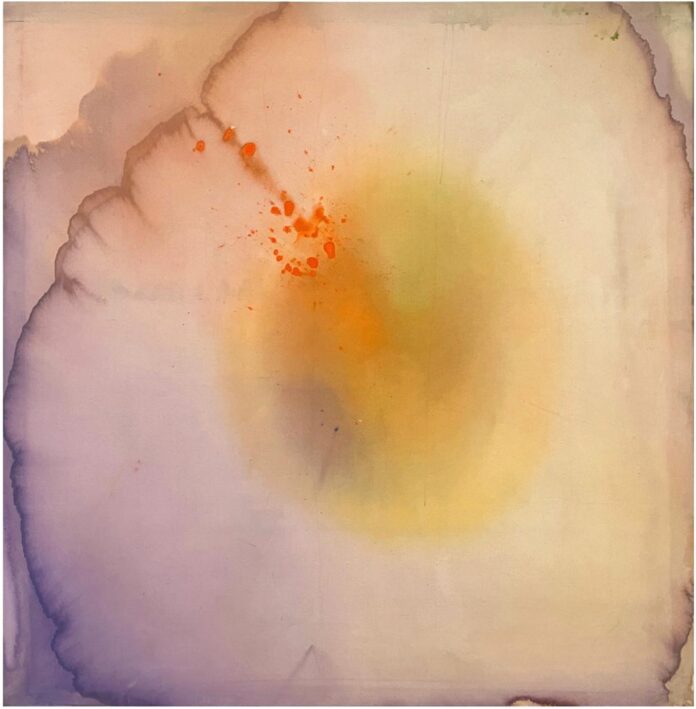Artnet Auctions’s fourth Abstracted sale is now open for bidding, presenting artworks from the 1940s to the modern day that explore and deconstruct the fundamentals of art in radical, inventive ways. Featured artists include Vivian Springford, Sam Francis, Günther Förg, Hans Hofmann, Mary Weatherford, Jonathan Lasker, Kenneth Noland, Nancy Graves, Ethan Cook, and more.
We spoke to Jason Rulnick, Senior Specialist of Post-War & Contemporary Art, about a selection of works within the sale, each representing a different style of Abstraction.
Why Abstract Art?
The roots of abstraction began early in the 20th century, originating from Cubism and Surrealism. These two movements allowed artists to convey differing perspectives of their subjects, or even differing perspectives of reality: a radical departure from the representational painting that was then the norm, which commemorated people, property, landscape scenes, or other subjects.
Abstraction slowly removed these pre-qualifiers, and instead, artists sought to create pictures within their own, less literal, visual language. In time, those artists who went “abstract” lost their collective preoccupation with subject, favoring variation and experimentation instead.
Although grouped together under the abstract moniker, the sale features an extraordinarily wide variety of works, exemplifying the freedom that abstraction offers. Here are a few key highlights from the sale, which each represent a different style of abstraction.
Hans Hofmann, (1948)

Hans Hofmann, (1948). Est. $25,000–$35,000.
A key work in our Abstracted sale is the aptly titled (1948) by Hans Hofmann. The artist once stated that “color is a plastic means of creating intervals—color harmonics produced by special relationships, or tensions,” and this rare work on paper exemplifies this. Colorful and dynamically layered, the composition feels grand and ambitious, despite its gem-like scale at 14 by 24 inches. Hofmann was regarded as one of the most influential instructors of the 20th century, who taught major proponents of abstraction such as Lee Krasner and Helen Frankenthaler.
Paul Reed, (1965)

Paul Reed, (1965). Est. $25,000–$35,000.
Geometric Abstraction was practiced by Kenneth Noland, Josef Albers, and Paul Reed, amongst others, in which hard-edged shapes were used to form non-representational subjects. In Abstracted, we’re offering Paul Reed’s from 1965; at over two meters long, it’s a museum-scale masterwork with fresh and punchy colors.
Reed was best known for being an integral member of the Washington Color School, alongside Gene Davis, Thomas Downing, Morris Louis, Howard Mehring, and Kenneth Noland, all of whom were living and working in Washington, D.C., and experimenting with abstract painting. These artists explored new forms, materials, and colors in invigorating and inspiring ways, resulting in works that continue to captivate viewers today.
Nancy Graves, (1977)

Nancy Graves, (1977). Est. $12,000–$18,000.
(1977) by Nancy Graves is a real highlight of the auction. It’s a work of linear bursts and flashes of color, creating a mesmerizing piece in a style referred to as lyrical abstraction.
Her work focused on exploring natural systems and environments—taking diagrams and maps as inspiration—which she veiled with aesthetic, colorful approaches to composition. Graves was celebrated as an influential figure in Post-Minimalist art, and in 1969 was the youngest person to ever have a solo exhibition at the Whitney Museum of American Art at the age of 29.
Graves died in 1995, but her influence can be seen today, such as in the work of contemporary artist Julie Mehretu.
Howard Mehring, (1962)

Howard Mehring, (1962). Est. $40,000–$60,000.
Compared to the organic aesthetic of Nancy Graves’s , this work by Howard Mehring, from 1962 feels extremely measured with its almost scientific exploration of how each plane of color interacts with each other.
The composition is a collaged painting on canvas, which was a popular medium amongst the Washington Color School. The work combines the looseness and expressiveness of painting with the rigidity of the structure of its collaged elements.
David Simpson, (1982)

David Simpson, (1982). Est. $20,000–$30,000.
This set of canvasses by David Simpson from the 1980s embodies an abstract Minimalism. While has no subject, the work focuses on the notion of objecthood and emphasizes simplicity, order, and restraint.
Simpson’s work shows influences of early abstractionists such as Piet Mondrian (Dutch, 1872–1944) and Mark Rothko (Russian-American, 1903–1970), with its exploration of color and line.
Other key Minimalist lots in the sale include works by Mary Weatherford and Kenneth Noland.
Jonathan Lasker, (2007)

Jonathan Lasker, (2007). Est. $18,000–$24,000.
Bringing Abstraction right up to the modern day, we’re also thrilled to offer works by contemporary artists such as Jonathan Lasker and his masterful (2007) A thoughtfully composed painting, the work is marked by elements that reoccur throughout the artist’s oeuvre. As he’s said, “I often think of my paintings as a form of image kit or perhaps as jigsaw puzzles, which offer components of painting as clues pointing the viewer, not a to a finished narrative…, but rather to a self-awareness of how one construes a painting.” This work can be viewed as an exploration of painting itself and the formal relationships of figure and ground.
Abstracted

























